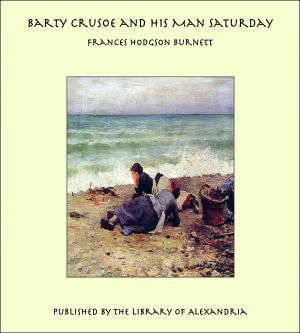Ivar the Viking: A Romantic History Based upon Authentic Facts of the Third and Fourth Centuries
Nonfiction, Religion & Spirituality, New Age, History, Fiction & Literature| Author: | Paul Belloni Du Chaillu | ISBN: | 9781465619211 |
| Publisher: | Library of Alexandria | Publication: | March 8, 2015 |
| Imprint: | Language: | English |
| Author: | Paul Belloni Du Chaillu |
| ISBN: | 9781465619211 |
| Publisher: | Library of Alexandria |
| Publication: | March 8, 2015 |
| Imprint: | |
| Language: | English |
The mariner sailing in the Baltic, as he skirts the shores of Gotland, sees on a promontory of that island several large cairns and mounds overlooking the sea, and the country that surrounds them. This promontory was the burial place of a family of great Vikings and rulers who held sway over the whole island a few centuries before and after our era. Among the most conspicuous cairns two are pointed out to the stranger, those of Hjorvard and his son Ivar, the hero of the present narrative. The events of which I am going to speak to you relate to them, and to what happened during their lives, towards the latter end of the third and the beginning of the fourth century, between the years A.D. 270 and 320, or about sixteen hundred years ago. Hjorvard, “the wide spreading,” so called on account of the widely extended maritime expeditions he had undertaken, was one of the most renowned Vikings of his time. In all his expeditions he had been successful and always victorious in his battles. The Roman fleets had never dared to attack him as he sailed with his numerous ships along the coasts of their wide empire to make war upon the different countries over which they held dominion. Hjorvard’s ancestors, by the side of whom he now lies buried, had been great warriors and sea-faring men like himself. They had sailed from the Baltic to the Caspian Sea, by the present Gulf of Finland, and also westward, along the coast of Friesland, Gaul, Britain, and as far south as the Mediterranean. The ships used by them in their river expeditions or along the coast during the summer months were unlike those of the Romans, and were much admired by them. Even in the first century the Romans feared these men of the north on account of the great fleets they possessed, and placed them as living on the most northern shores of the sea, in the very ocean itself. They called them Sueones; and all they knew of their country was what these Sueones told them about it, for the Baltic was an unknown sea to the Romans. Hjorvard was of high lineage, for he was descended from Odin, and he belonged to that branch of the family of Odin called Ynglingar, which ruled over Svithjod, a realm that embraced a great part of the present Sweden. Sigrlin, his wife, was a very handsome woman, and possessed all the accomplishments belonging to women of her high rank. She was also of Odin’s kin; was a direct descendant of Skjöld (the Norse word for shield), one of the sons of Odin, from whom the Skjöldungar are descended. The Skjöldungar ruled over that part of the land which to-day is called Denmark, but which was then called Gotland. Her father was called Halfdan, and resided at Hleidra, not far from where Copenhagen stands to-day, and was one of the great rulers of the north.
The mariner sailing in the Baltic, as he skirts the shores of Gotland, sees on a promontory of that island several large cairns and mounds overlooking the sea, and the country that surrounds them. This promontory was the burial place of a family of great Vikings and rulers who held sway over the whole island a few centuries before and after our era. Among the most conspicuous cairns two are pointed out to the stranger, those of Hjorvard and his son Ivar, the hero of the present narrative. The events of which I am going to speak to you relate to them, and to what happened during their lives, towards the latter end of the third and the beginning of the fourth century, between the years A.D. 270 and 320, or about sixteen hundred years ago. Hjorvard, “the wide spreading,” so called on account of the widely extended maritime expeditions he had undertaken, was one of the most renowned Vikings of his time. In all his expeditions he had been successful and always victorious in his battles. The Roman fleets had never dared to attack him as he sailed with his numerous ships along the coasts of their wide empire to make war upon the different countries over which they held dominion. Hjorvard’s ancestors, by the side of whom he now lies buried, had been great warriors and sea-faring men like himself. They had sailed from the Baltic to the Caspian Sea, by the present Gulf of Finland, and also westward, along the coast of Friesland, Gaul, Britain, and as far south as the Mediterranean. The ships used by them in their river expeditions or along the coast during the summer months were unlike those of the Romans, and were much admired by them. Even in the first century the Romans feared these men of the north on account of the great fleets they possessed, and placed them as living on the most northern shores of the sea, in the very ocean itself. They called them Sueones; and all they knew of their country was what these Sueones told them about it, for the Baltic was an unknown sea to the Romans. Hjorvard was of high lineage, for he was descended from Odin, and he belonged to that branch of the family of Odin called Ynglingar, which ruled over Svithjod, a realm that embraced a great part of the present Sweden. Sigrlin, his wife, was a very handsome woman, and possessed all the accomplishments belonging to women of her high rank. She was also of Odin’s kin; was a direct descendant of Skjöld (the Norse word for shield), one of the sons of Odin, from whom the Skjöldungar are descended. The Skjöldungar ruled over that part of the land which to-day is called Denmark, but which was then called Gotland. Her father was called Halfdan, and resided at Hleidra, not far from where Copenhagen stands to-day, and was one of the great rulers of the north.















